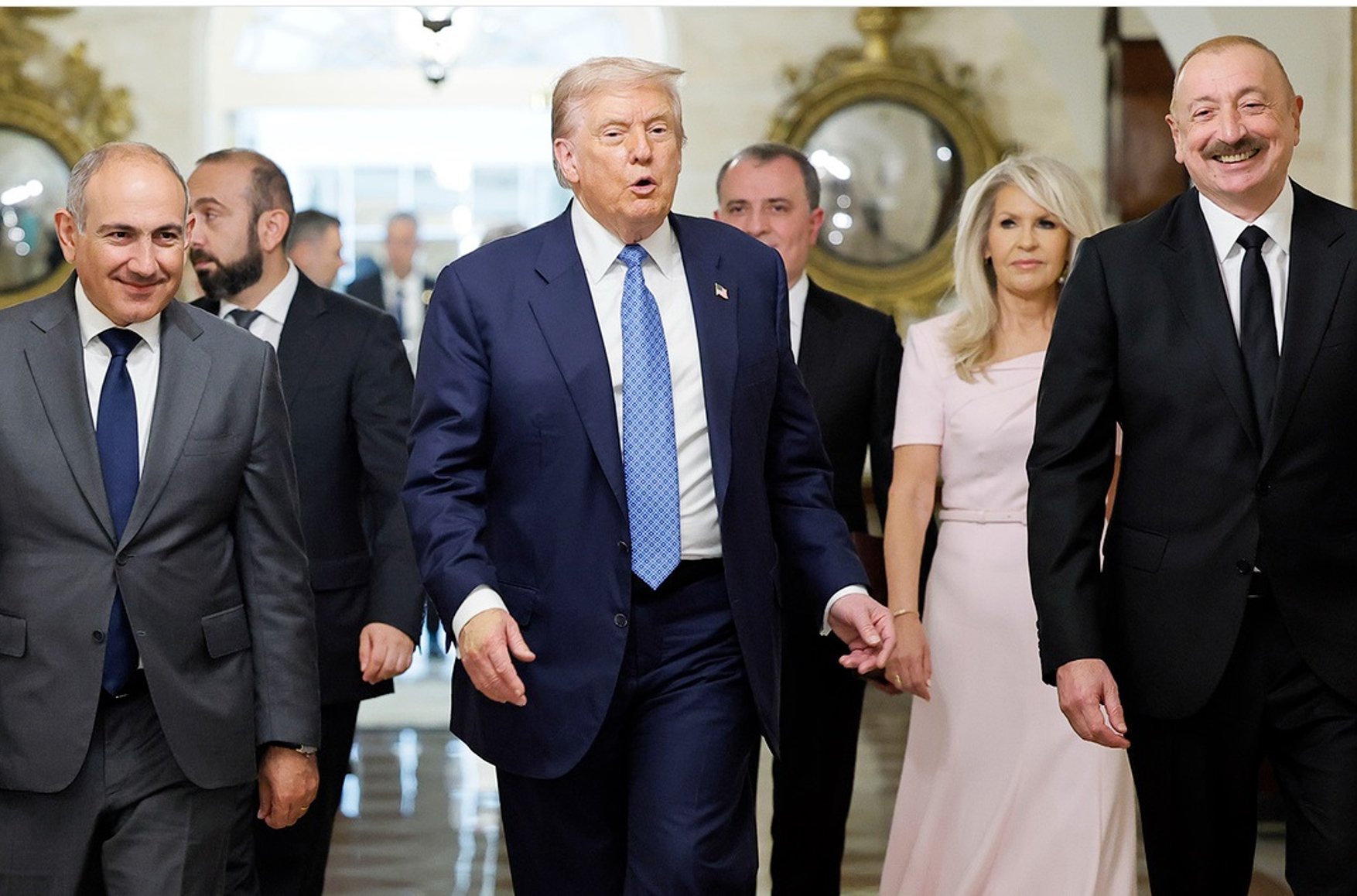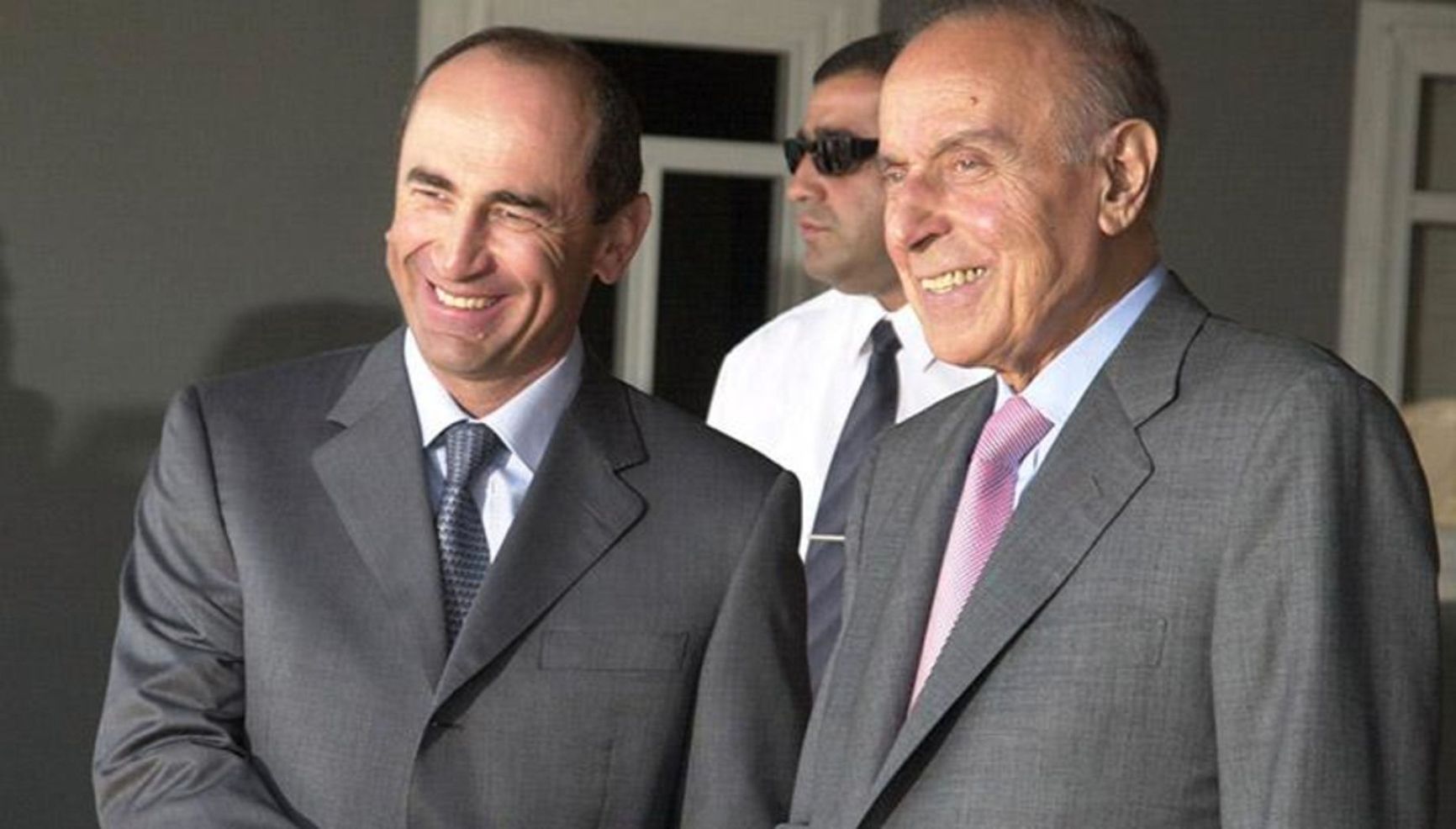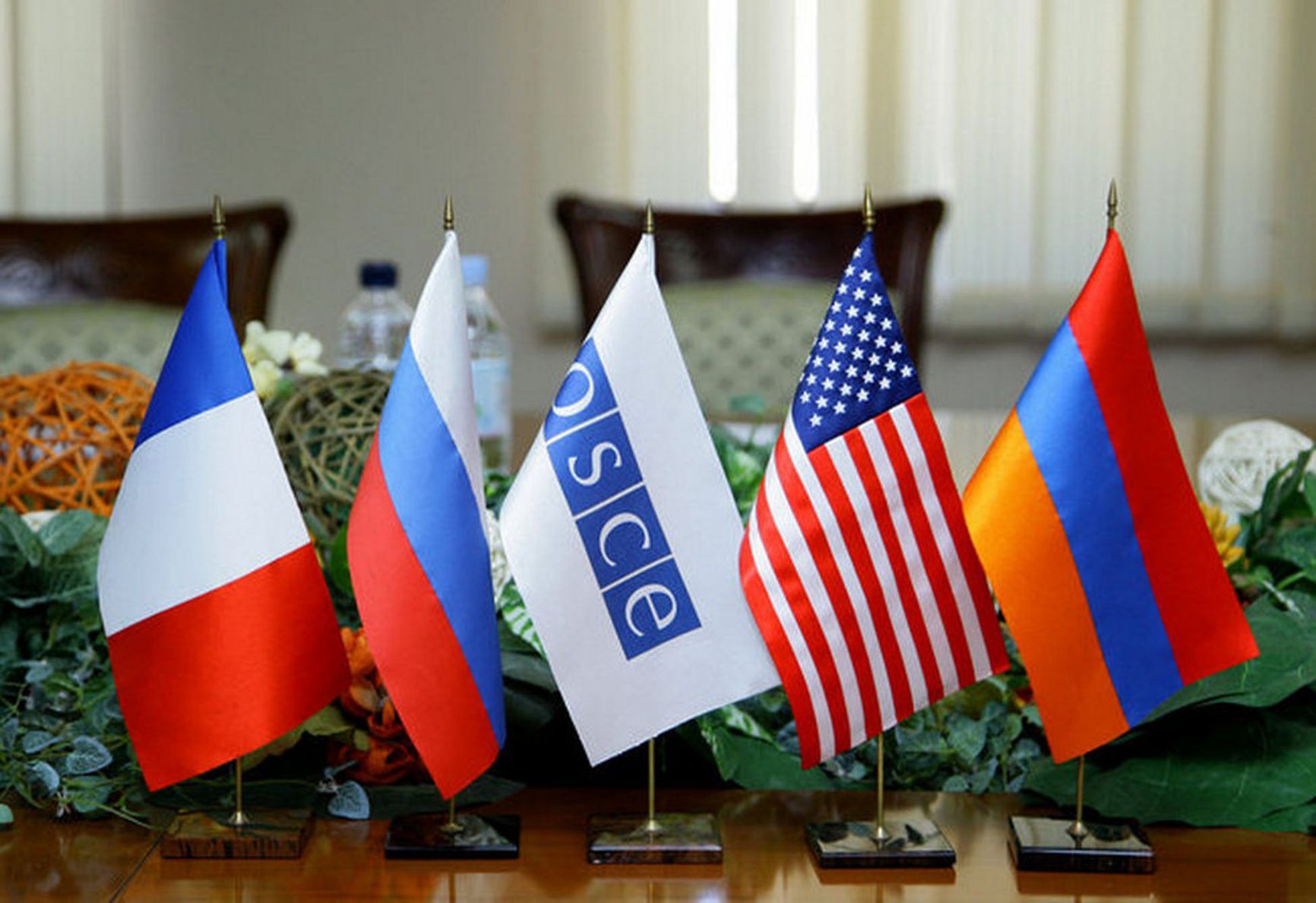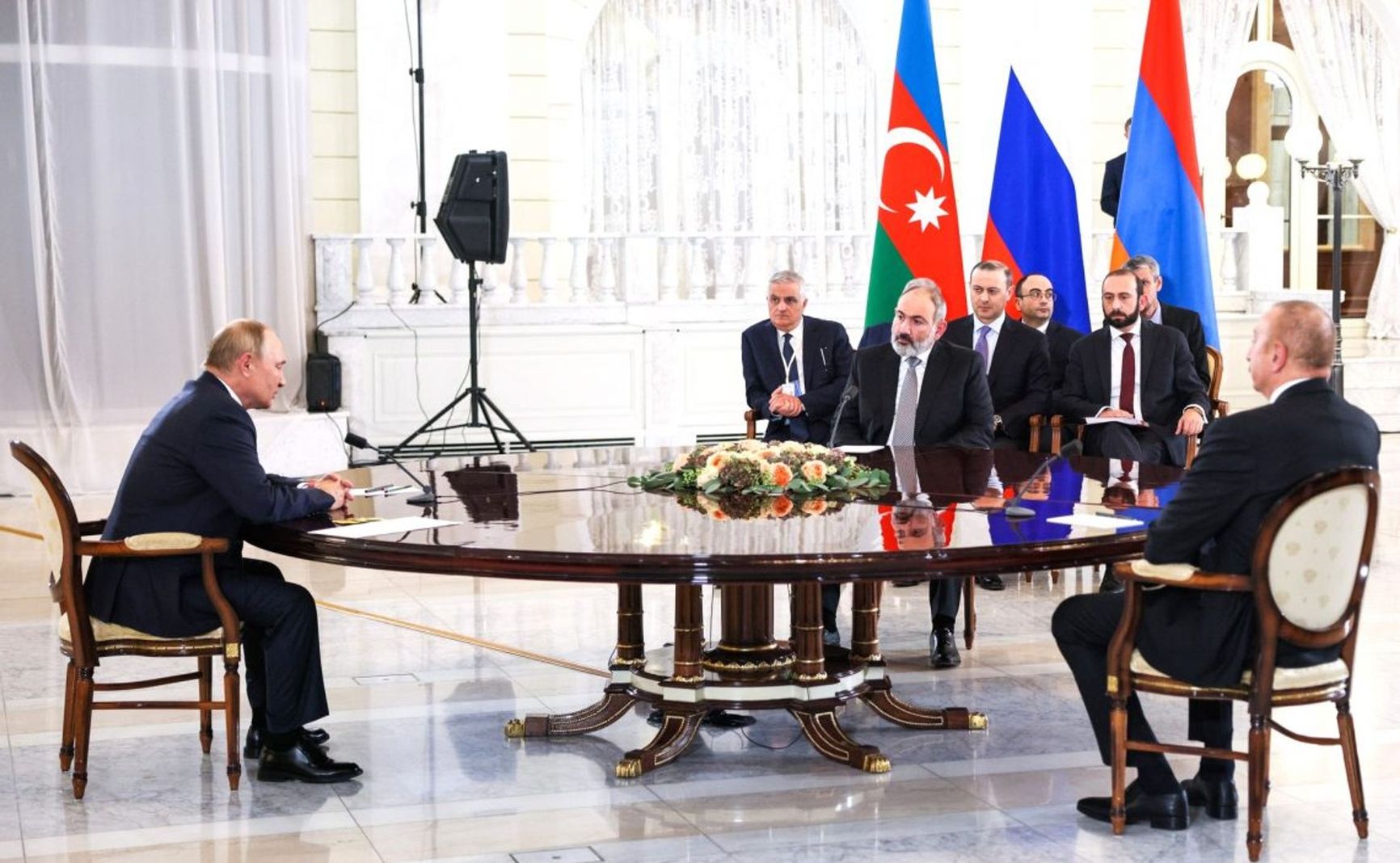

On August 11, Armenia and Azerbaijan released the text of the agreement their leaders had endorsed three days prior in the Oval Office with Donald Trump. The document is not a full-fledged peace treaty yet — just an initialing — and many aspects of the so-called “Trump Route,” a transport corridor that would run through both countries, are still murky. Even so, officials are hailing this as a historic breakthrough. The leaders of both nations promise it will bring peace to Azerbaijanis and Armenians alike — and prosperity to the region. Noticeably absent from the celebration was Russia, which is losing its influence in both Baku and Yerevan. Iran, left on the sidelines, isn’t happy either.
Content
Not the first try
What was signed in Washington
What is the “Trump Route”?
The Russian factor
What’s next
Not the first try
Over the course of the 37-year conflict between Armenia and Azerbaijan, there has been no shortage of high-stakes moments, and face-to-face meetings between the two countries’ leaders have certainly been among them. On October 11, 1999, and again on August 14, 2002, Heydar Aliyev — the father of Azerbaijan’s current president — sat down with Armenia’s then-president Robert Kocharyan on the Armenian-Azerbaijani border for hours of closed-door talks. There have also been times when both sides announced that the text of a peace agreement was ready, only for hopes to fade.

Presidents of Armenia and Azerbaijan Robert Kocharyan and Heydar Aliyev at a 1999 meeting
In early 2001, it was even announced that a peace treaty would be signed in Geneva six months later — but it never happened. There were also the well-known “Madrid Principles,” put forward in November 2007 by the co-chairs of the OSCE Minsk Group as the final text of a peace agreement. Back then, the talk was all about a “historic breakthrough,” a “chance for peace,” and so on. That, too, came to nothing.
Now, there is yet another declaration of a “historic breakthrough.”
What was signed in Washington
The opposing sides still have not signed a peace treaty. As Ilham Aliyev clarified to Azerbaijani journalists immediately after the summit, “territorial claims against Azerbaijan” contained in Armenia’s constitution prevented the signing of a final agreement that day. “But after these changes are made, the peace agreement can be signed at any time,” he explained. He added that the timing was up to Armenia, stressing that, “The sooner, the better — there’s no point in wasting time and dragging out the official signing.”
“Armenia’s territorial claims against Azerbaijan prevented the signing of the peace agreement,” Aliyev said in Washington.
Instead, the foreign ministers of Azerbaijan and Armenia initialed the text of the peace agreement, which the two countries then jointly published on August 11. After that, the presidents of Azerbaijan and Armenia signed a joint declaration, which also signed by Trump as a witness. The document reaffirmed the importance of signing the initialed peace agreement on the basis of respect for one another’s territorial integrity and the adoption of the 1991 Alma-Ata Declaration.
Azerbaijan and Armenia then issued a joint appeal to OSCE member states to dissolve the Minsk Group — the body that had previously led the conflict-resolution process with the active involvement of Russia, France, and the United States — along with its affiliated structures.
The declaration also stressed the importance of opening up regional transport links and creating a corridor along the Iranian border — one running through Armenian territory between Azerbaijan’s mainland and its exclave, the Nakhchivan Autonomous Republic. The corridor was named the “Trump Route for International Peace and Prosperity” (TRIPP). To make it happen, Armenia pledged to work with the United States and with mutually agreed upon third parties — meaning, primarily, Azerbaijan and Turkey.

The exact route of the “Trump corridor” is still unknown
Alongside the agreement to open up transit routes in the region, the parties also signed bilateral agreements between the United States and Azerbaijan, and between the United States and Armenia. These were in the fields of energy, trade, and technology.
What is the “Trump Route”?
Again, the peace treaty not yet been signed. It has only been initialed, meaning it is merely a preliminary agreement. The final version can only come into force after Armenia amends its constitution, which could happen as early as 2026 (following parliamentary elections on June 7 of next year), though as Pashinyan recently noted, the more likely target date is sometime in 2027.
So what happens until then? Construction of TRIPP is supposed to begin, even though the project’s details remain unclear. In fact, it appears the “Trump Route” plans haven’t been worked out at all. For now, a working group has been formed that will start discussing all of the technical details. According to Politico, Armenia has agreed to grant the United States exclusive rights to develop TRIPP for 99 years. The U.S., in turn, will sublease the 42 kilometers of Armenian territory along the Iranian border to a consortium that will develop infrastructure along this stretch.
It’s also unclear whether this agreement refers exclusively to a 42-kilometer-long transport corridor linking mainland Azerbaijan to the Nakhchivan Autonomous Republic, or whether it would also allow Armenia to use Azerbaijani territory for transport. Pashinyan, at least, gave assurances after the summit that “Armenia will now be unblocked,” suggesting that both countries will be able to transit through each other’s territory, and that Armenia “will gain access to the international railway network toward Russia, Central Asia, and China.” But that raises another question: how will Azerbaijan’s sovereignty be maintained, and who exactly will oversee the movement of goods through its territory?
Pashinyan gave assurances after the summit that “Armenia will now be unblocked”
In short, there are still plenty of unanswered questions about how the TRIPP project will actually be implemented. Building the “Trump Route” will take time — and it will most likely only be finished after Trump himself has left the White House. What happens then? Will the next U.S. administration keep backing the project, or will it fade into history?
The Russian factor
The easiest issue to resolve seems to be the dissolution of the OSCE Minsk Group. On August 9, France’s Foreign Ministry released a statement expressing support for the sides’ joint call to disband the Minsk Group’s structures. That means two of the group’s three co-chairs — the United States and France — are on board with Azerbaijan and Armenia’s request. That leaves Russia. And here, there may be surprises.

The United States and France support dissolving the OSCE Minsk Group
On April 14, 2022, Russia changed the status of its representative in the OSCE Minsk Group, making him a special envoy of the Russian Foreign Ministry “for facilitating the normalization of relations between the Republic of Azerbaijan and the Republic of Armenia.” Since then, Russian officials have repeatedly stated that the Minsk Group, along with all its institutions, has in effect ceased to function. As Russian Foreign Ministry spokesperson Maria Zakharova stressed again on March 20, it “is no longer subject to reinstatement.”
The OSCE Minsk Group has ceased its work and will not be reinstated, Maria Zakharova says
However, the Washington summit has dramatically changed the picture, and there is no guarantee that Russia won’t change its mind given the new reality. Even though the peace treaty has yet to be signed — and even though much about the TRIPP project remains unclear — one thing is certain: the meeting in Washington was a distinctly geopolitical event. It marks the start of a new era in the South Caucasus, one in which there is no place for Russia, even if Pashinyan did later personally brief Putin on the meeting’s outcome.
For the Kremlin, this is more than just an unfortunate setback in foreign policy —- it is a complete fiasco. Until now, Moscow had been the outside power shaping the region’s future. Just five years ago, on November 9, 2020, it acted as a mediator in order to stop the fighting between Azerbaijan and Armenia. Back then, Putin stood between Aliyev and Pashinyan as a go-between, and it was Russia that inserted into the text of the trilateral agreement a clause on unblocking all transport links in the region. Under that arrangement, Armenia pledged to guarantee safe transport between Azerbaijan’s mainland and the Nakhchivan Autonomous Republic so as “to ensure unimpeded movement of citizens, vehicles, and goods in both directions,” with “transport control carried out by Russia’s FSB Border Service.”

Putin, Aliyev, and Pashinyan at a meeting in Sochi, 2022
Five years later, however, with Trump acting as mediator, the leaders of Azerbaijan and Armenia have signed a document that once again raises the issue of unblocking transport links — this time under U.S. auspices. In the Kremlin, this turn of events was seen as a profound humiliation, and Russian political analysts and lawmakers are predicting regional destabilization and voicing concern over the future of Russia’s military base in Gyumri.
While many world leaders expressed approval of the summit’s results, the Kremlin seemed unsure how to respond officially. Then, on August 9, after offering a routine assessment of the Washington summit, Russian Foreign Ministry spokesperson Maria Zakharova launched into a history lesson about Russia’s role as mediator in resolving the Armenian-Azerbaijani conflict and about the November 9, 2020, agreement. She then stated: “The optimal way to address the problems of the South Caucasus is to seek and implement solutions developed by the countries of the region themselves, with the support of their immediate neighbors — Russia, Iran, and Turkey.” Zakharova, ignoring the fact Turkey had indeed played a key role in shaping the region’s new geopolitical reality — albeit alongside the United States — went on to stress: “The involvement of extra-regional players should serve to strengthen the peace agenda and should not create additional difficulties or dividing lines.”
What’s next
Iran, too, is far from pleased with the outcome of the Washington summit. The Iranian Foreign Ministry voiced its “concern over the negative consequences of any external interference in any form, especially near shared borders, which undermines the security and long-term stability of the region.” Ali Akbar Velayati, an adviser to Iran’s Supreme Leader, declared that Tehran would not allow the creation of a U.S.-controlled transport corridor near its border, warning that such a route “would turn into a graveyard for Donald Trump’s mercenaries.”
Iran has said that a U.S.-controlled corridor “will turn into a graveyard for Donald Trump’s mercenaries”
However, after its 12-day war with Israel, Iran is in a difficult situation and is unlikely to be able to directly influence events. Analysts see Tehran’s public outrage as little more than an attempt to signal its interest in the region and position itself as a participant in the TRIPP project.
Meanwhile, Russia’s negative reaction — even if unofficial — is being taken more seriously by experts. Moscow is unlikely to be able to put an end to the growing U.S. role in the region, but it still has plenty of tools to make life difficult for both Azerbaijan and Armenia. The smiling photographs from last week’s Oval Office meeting might not prove to be the final chapter in this long and bloody story.